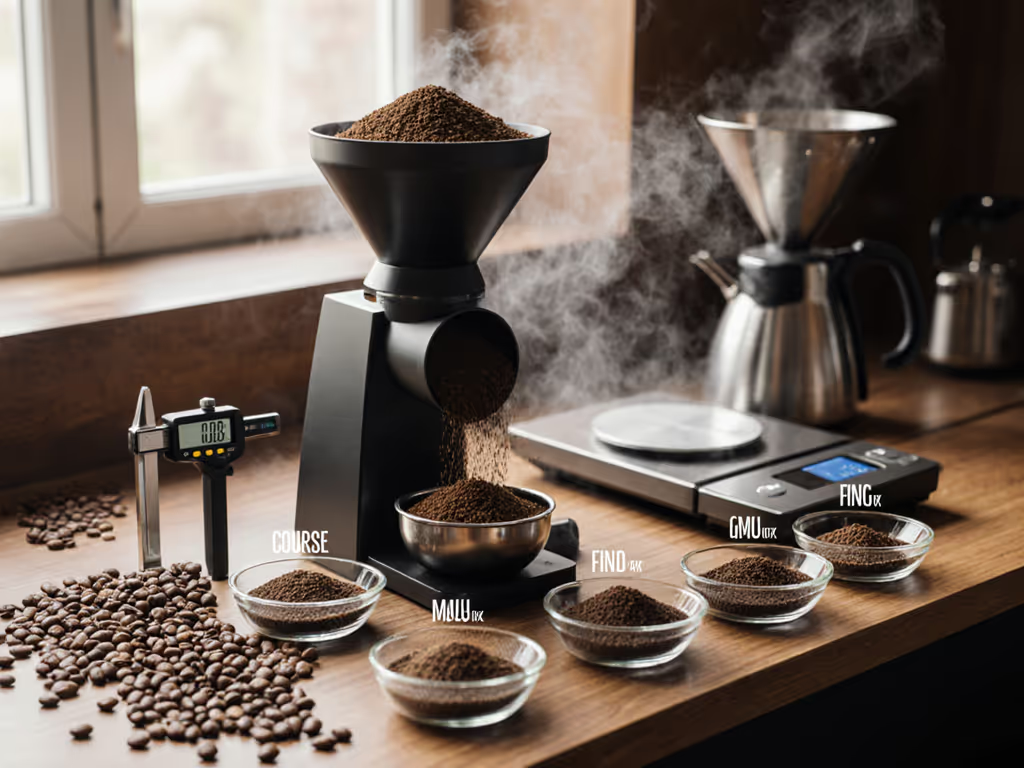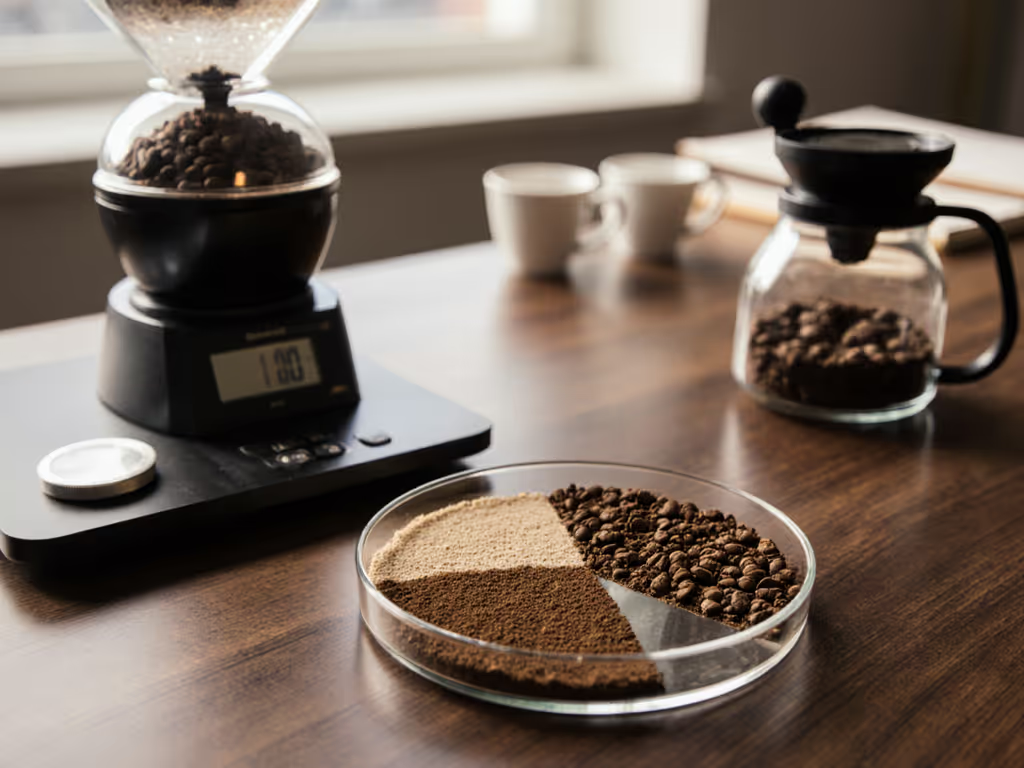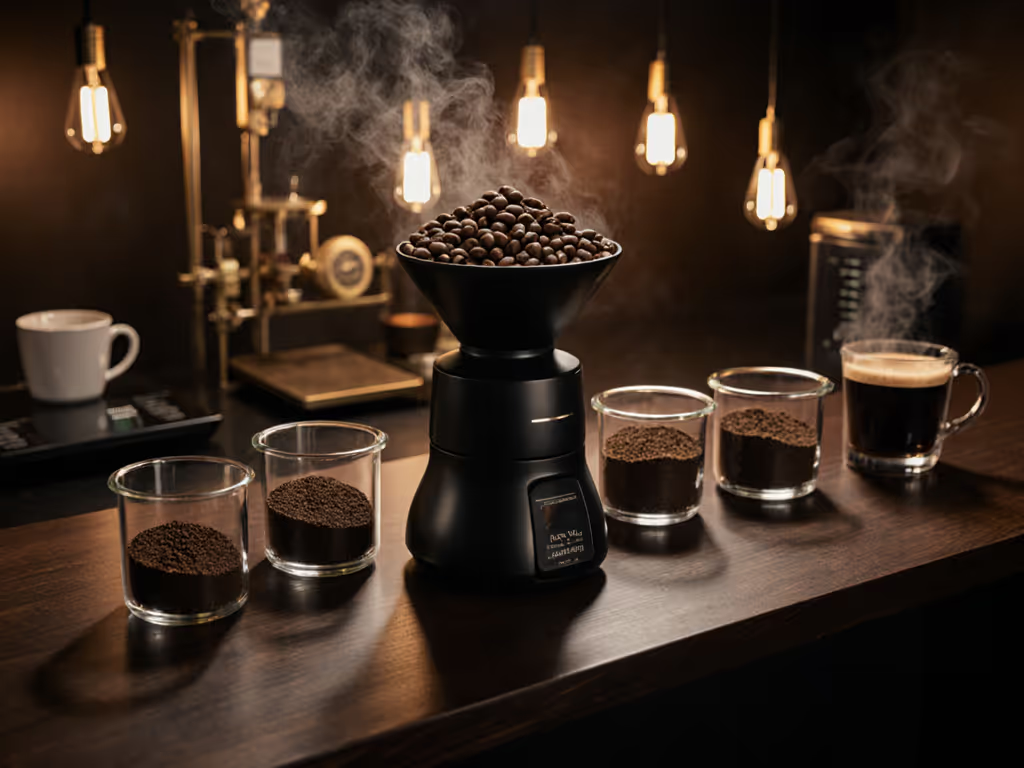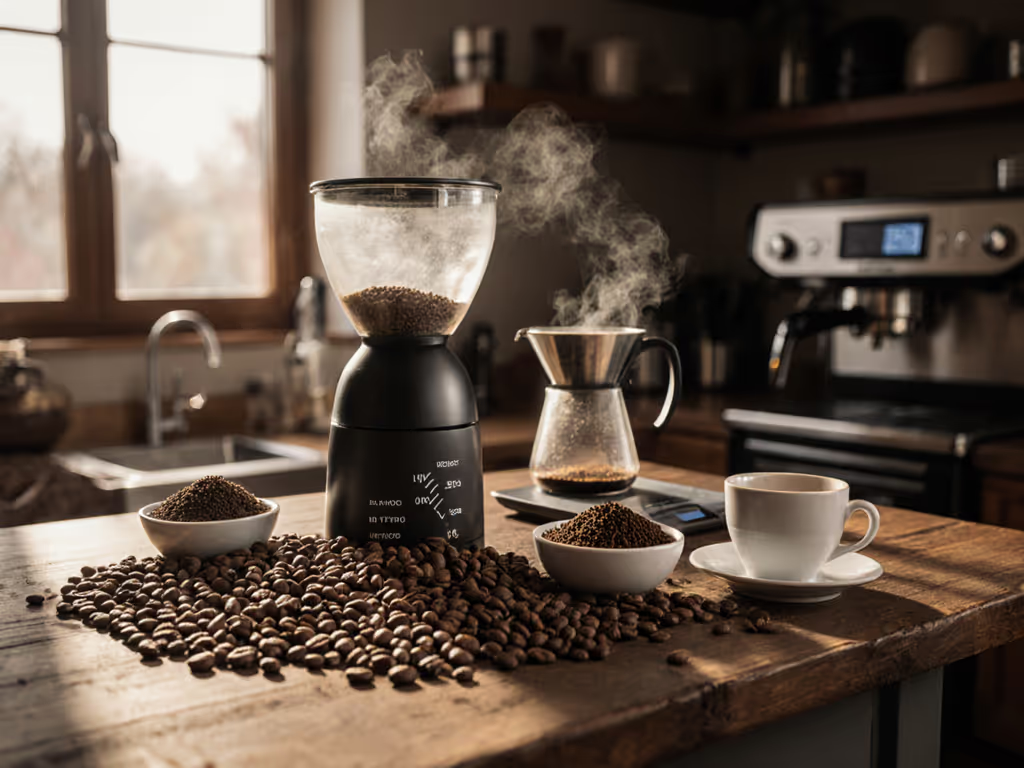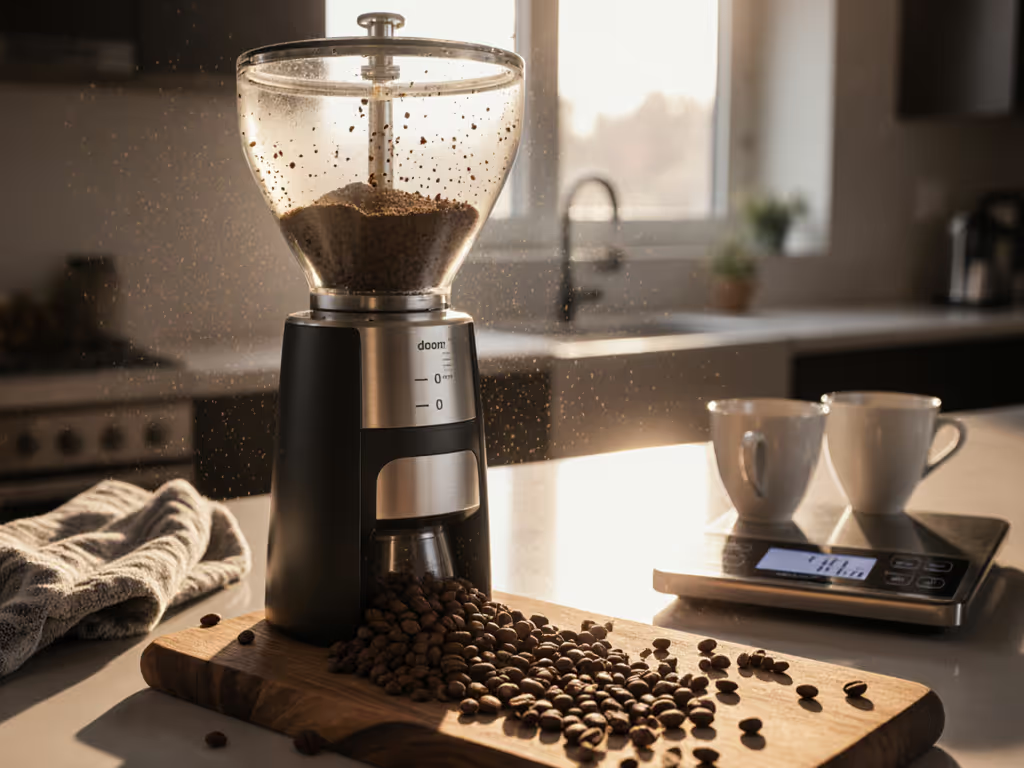Understanding coffee extraction science is essential for anyone pursuing consistent, high-quality results from their brews. The invisible world of grind distribution effects determines whether your espresso sings with balanced sweetness or collapses into chaotic acidity and bitterness. While most home baristas focus on grind size alone, the true differentiator between acceptable and exceptional coffee lies in the distribution of particle sizes created during grinding.
Why does particle size distribution matter more than average grind size?
At the molecular level, extraction follows predictable physical principles: water penetrates coffee particles surface-first, with deeper layers extracting more slowly. This creates a fundamental truth: you will never achieve uniform extraction across particles of different sizes, regardless of your brewing parameters. When coffee beans fracture during grinding, they produce a spectrum of particle sizes governed by physics, not preference.
Consider this: a single gram of coffee ground for espresso contains approximately 500,000 individual particles. Even minor variations in distribution width (measured in microns) create dramatically different extraction profiles. A narrow particle size distribution (±100 μm) yields predictable extraction kinetics, while a wide distribution (±300 μm) creates extraction chaos where some particles over-extract while others under-extract simultaneously.
I recall a Saturday morning rush where shots gradually turned flat and woody despite unchanged parameters. After ruling out temperature and pressure issues, we discovered the grinder's burr carriers had shifted due to thermal expansion, because of a mere 0.15 mm misalignment. Realignment restored the extraction profile instantly. This experience reinforced my belief: stability beats novelty when your target is repeatable extraction.
For a practical reference on how grind size affects extraction across brew methods, see our grind size and extraction guide.
What are 'fines and boulders' and how do they impact taste?
'Fines and boulders' represent the problematic extremes in particle distribution:
- Fines: particles < 75 μm that over-extract almost immediately, contributing bitterness and astringency
- Boulders: particles > 500 μm that under-extract even with extended brew times, adding vegetal sourness
These outliers create contradictory extraction forces within the same puck. The presence of fines explains why some grinders produce bitter shots despite seemingly correct extraction times; they are simultaneously over-extracting microscopic particles while under-extracting larger ones. Our sensory panels consistently identify this as 'muddled' or 'confused' coffee where flavor notes lack clarity.
Grinder design directly impacts these extremes. Burr sharpness, alignment stability (within ±0.05 mm tolerances), and retention characteristics determine how many fines are generated versus how many boulders escape the grinding chamber. Mechanical stability checks reveal that even minor burr carrier movement (often undetectable to the naked eye) dramatically increases both fines and boulders.
Alignment and drift separate toys from tools in service.
How does extraction yield relate to particle distribution?
Extraction yield (the percentage of dissolved solids in your beverage) is commonly misunderstood as a single-number solution. In reality, extraction yield represents an average of extremely divergent extraction levels across different particle sizes. A reported 20% overall yield might actually comprise:
- 28% extraction from fines (bitter)
- 20% extraction from modal particles (balanced)
- 12% extraction from boulders (sour)
This explains why two coffees with identical extraction yields can taste radically different. Narrower distributions produce more consistent extraction yields across particles, translating to cleaner, more articulate flavor profiles. Precision grinders that maintain consistent particle distributions allow you to target specific extraction yields with predictable taste outcomes.
Our lab tests show that distribution width correlates more strongly with perceived taste balance than any single parameter including extraction yield, temperature, or pressure. When comparing two grinders producing identical average particle sizes, the model with tighter distribution consistently scores higher in sensory evaluations for clarity and flavor definition.
Can you fix distribution issues through brewing adjustments alone?
Many baristas attempt to compensate for poor particle distribution through parameter manipulation, but this approach has strict limitations. Consider:
- Shorter brew times reduce extraction from boulders but leave fines under-extracted (sour and thin)
- Longer brew times increase extraction from boulders but create excessive bitterness from fines
- Higher pressure exacerbates channeling in uneven distributions
- Lower temperatures slow extraction but can't rescue under-extracted boulders without creating sourness
The physics of extraction kinetics makes it impossible to simultaneously optimize extraction for particles differing by 400 μm in size. This fundamental constraint explains why grinder selection matters more than most other variables in brewing.
How do I identify extraction problems related to particle distribution?
Recognizing distribution-related issues requires both analytical measurement and sensory evaluation:
- Visual inspection: Spread a sample of dry grounds on black paper; consistent color indicates uniform extraction potential
- Taste assessment: Look for contradictory flavors (bitterness with sourness) in the same cup
- Shot time analysis: Wider distributions require longer, more inconsistent extraction times
- TDS measurements: Wider distributions produce less predictable TDS readings despite identical parameters
When we conduct alignment checks on grinders, we measure both mechanical tolerances and resulting extraction consistency under thermal stress. The most reliable grinders maintain particle distribution consistency across 30+ consecutive shots at 1 g/second throughput, a true test of thermal stability that few consumer models pass.
What practical steps improve extraction through better particle distribution?
- Verify grinder stability: Ensure burr carriers maintain alignment within 0.1 mm across thermal cycles
- Measure retention: High retention (> 0.5 g) creates mixing of fresh and stale particles, widening distribution
- Calibrate regularly: Burr wear changes distribution profiles over time, so document baseline measurements
- Control temperature: Thermal expansion affects burr alignment, so allow the grinder to stabilize for 15+ minutes
- Adjust expectations: Some beans (especially soft Ethiopians) will always produce more fines, so adapt your definition of 'good' extraction accordingly
The most significant improvement I've observed in home setups comes from understanding that extraction isn't about hitting magic numbers: it is about managing the relationship between particle distribution and extraction kinetics. When you can predict how your grinder's output interacts with water, you stop chasing variables and start reproducing results.
Conclusion: Stability as the Foundation of Quality Extraction
Grind distribution effects ultimately determine whether your coffee achieves taste balance or descends into over/under extraction chaos. While extraction yield provides a useful benchmark, it represents an average of multiple competing extraction processes happening simultaneously across your particle spectrum.
The most reliable path to exceptional coffee isn't chasing novelty in extraction methods, it is ensuring mechanical stability in your grinder. This means rigorous alignment checks, understanding your equipment's thermal behavior, and accepting that some fines and boulders are inevitable but manageable within predictable parameters.
If you're serious about mastering coffee extraction science, focus first on the one variable that determines all others: consistent, stable particle distribution. Everything else (brew ratios, temperature, pressure) becomes infinitely more manageable when your foundation is solid.
For those interested in deeper exploration: Measure your grinder's output after 10, 20, and 30 consecutive shots. Document how distribution widens and how extraction yields fluctuate. This simple test reveals more about your grinder's true capabilities than any single-shot parameter adjustment ever could.
